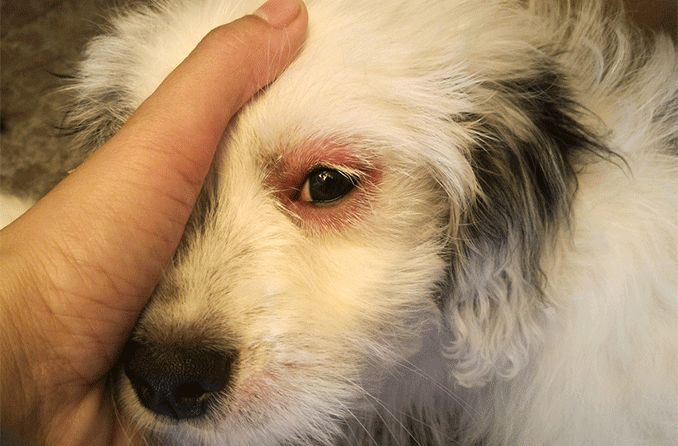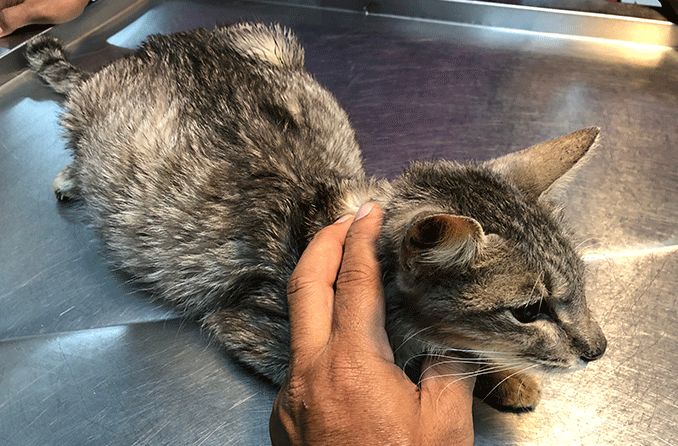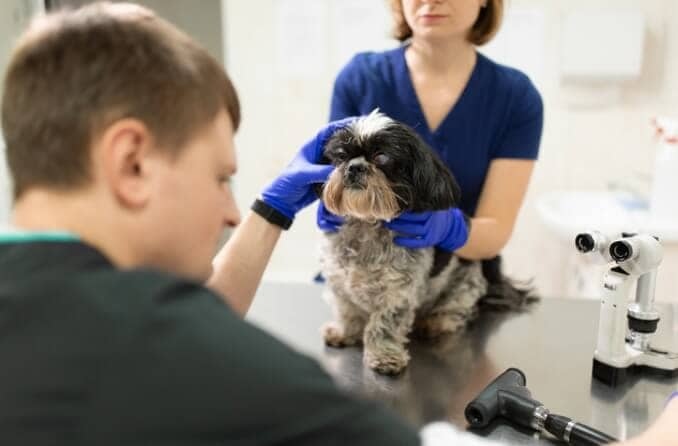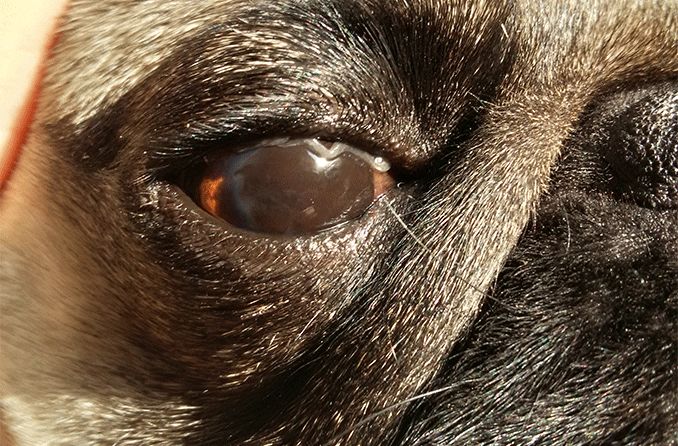Proper treatment for conjunctivitis in dogs depends on what caused the condition to develop in the first place. If conjunctivitis occurred because of a specific disease or underlying eye condition, the primary treatment will likely be for that condition.
The options for conjunctivitis treatment range from artificial tears to surgery, and can come in forms of topical and/or oral medication. In addition to specific veterinarian-recommended treatments, cool or warm compresses may also help relieve pain or irritation — regardless of the cause of conjunctivitis.
Artificial tears
Flushing the eyes with a saline rinse or artificial tears may be recommended for conjunctivitis caused by the following:
- Dry eyes (non-KCS)
- Mild allergies
- Viral infections
Artificial tears can also help wash away dirt from the eyes to relieve some pain and prevent further damage. Additionally, artificial tears can be used in combination with other treatments to soothe the irritation in the eyes.
Steroids, antihistamines and anti-inflammatories
Temporary relief and treatment can be found in oral and topical steroids, antihistamines and anti-inflammatories. Conditions like the following can benefit from these types of medication:
- Severe allergies
- Infections
Immunosuppressants
Immunosuppressants such as cyclosporine and tacrolimus ophthalmic are often prescribed for dogs that have KCS in order to promote proper tear production. This helps prevent complications (such as conjunctivitis) from occurring.
Antibiotics
Many times, specific antibiotics are prescribed to help a pet’s condition. Antibiotics may help with the following:
- Bacterial infections
- Skin infections that develop alongside conjunctivitis
Depending on the treatment needed, antibiotics are either taken topically or orally. Your vet will give you instructions for administering either type of antibiotic.
Antivirals
Viral infections that cause conjunctivitis are sometimes treated with antiviral medicated eye drops such as Trifluridine and Idoxuridine. Such viral infections can include:
Although this type of therapy is available, it is not always recommended.
Surgery
A surgical procedure may be needed if conjunctivitis developed due to an eye condition such as:
- Blocked tear ducts
- Eyelid or eyelash disorders
- Severe trauma
Surgery might be followed up with antibiotics or other treatments to ensure everything heals properly. Your dog may also be required to wear an Elizabethan (cone) collar to prevent pawing at the eye (this may be recommended in less intense treatments as well).
Be wary of “home remedies”
Some home remedies that you read about can actually do more harm than good, so it’s always best to check with your vet before beginning serious treatment for any illness or injury that your dog may experience — including pink eye.
Dogs usually recover fully from conjunctivitis, but they should be seen promptly to help prevent any additional eye problems from developing.










